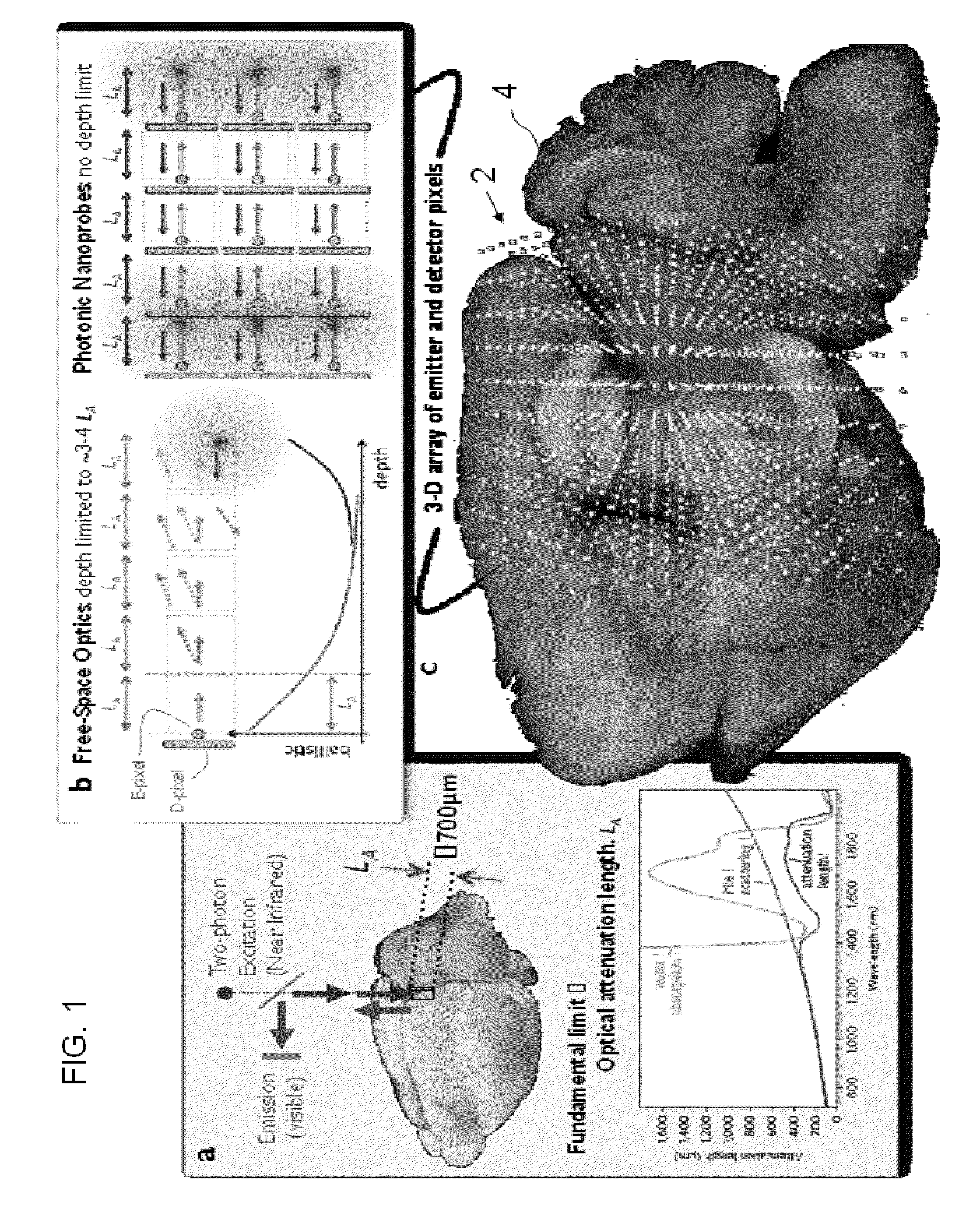One-photon integrated neurophotonic systems
a neurophotonic system and integrated technology, applied in the field of tissue functional imaging apparatus and method, can solve the problems of not being able to record electrically from specific cell types, still very far from understanding how large ensembles of neurons in the brain interact to process information, and not being able to understand the interaction between large ensembles of neurons in the brain to process information, etc., to achieve high throughput screening and accelerate drug discovery
- Summary
- Abstract
- Description
- Claims
- Application Information
AI Technical Summary
Benefits of technology
Problems solved by technology
Method used
Image
Examples
example 1
[0097]A simulation based on the prototype design for the neurophotonic probe arrays has been executed (FIG. 8). This demonstrates that the integrated neurophotonic probes described herein are capable of recording from very large populations of neurons, and can provide single-cell resolution. This modeling also shows that it is possible to assign calcium events that contribute the resulting, very-high-dimensional data stream to specific neurons. To validate the paradigm for optical spike sorting, a simulation involving 360 neurons randomly in a 282×282×50 μm3 unit volume (0.004 mm3) has been carried out. This mimics cell densities that are observed via two-photon imaging from the mouse visual cortex in vivo. The excitation intensity provided by each E-pixel to each neuron was determined, and the collection efficiency from each neuron to each D-pixel within one attenuation length was numerically calculated. Each specific combination of emitters and detectors yields an independent meas...
PUM
 Login to View More
Login to View More Abstract
Description
Claims
Application Information
 Login to View More
Login to View More - R&D
- Intellectual Property
- Life Sciences
- Materials
- Tech Scout
- Unparalleled Data Quality
- Higher Quality Content
- 60% Fewer Hallucinations
Browse by: Latest US Patents, China's latest patents, Technical Efficacy Thesaurus, Application Domain, Technology Topic, Popular Technical Reports.
© 2025 PatSnap. All rights reserved.Legal|Privacy policy|Modern Slavery Act Transparency Statement|Sitemap|About US| Contact US: help@patsnap.com



